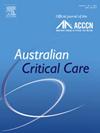澳大利亚临床实践指南的物理康复和动员在成人重症监护病房
IF 2.7
3区 医学
Q2 CRITICAL CARE MEDICINE
引用次数: 0
摘要
在重症监护病房的身体康复和动员研究的证据基础导致了最佳实践的不确定性。本指南的目的是制定基于证据的建议,以支持澳大利亚重症监护病房中接受有创机械通气的成人身体康复管理的临床决策。方法由全国临床专家、方法学家和消费者代表组成的指南制定小组遵循严格的程序,遵循澳大利亚国家健康和医学研究委员会指南中的指南来制定建议。指南制定小组确定了指南的范围并定义了关键的临床问题。根据预先确定的结果进行了系统评价,以评估所有可用的证据。采用有限最大似然法进行meta分析,并将结果汇总在证据概要中。建议分级评估、发展和评价(GRADE)方法用于评估证据的确定性,并使用GRADE证据决策框架来制定建议。基于证据概要和GRADE决策证据框架,该小组制定了三项有条件的建议和14项良好临床实践声明来指导实践。该指南提供了有条件的建议,支持在重症监护病房接受有创机械通气的成人进行身体康复和活动,同时承认证据的不确定性。它得到了四个主要专业机构的支持。结论本指南中的建议是根据最佳方法实践制定的。尽管证据的总体确定性较低,但最终的指南为临床决策提供了支持,促进了研究向实践的转化,并增强了临床研究的范围和影响。此外,指南制定小组确定了未来研究可以解决的证据差距。试验注册不适用。本文章由计算机程序翻译,如有差异,请以英文原文为准。
Australian clinical practice guideline for physical rehabilitation and mobilisation in adult intensive care units
Background
The evidence base for research on physical rehabilitation and mobilisation in the intensive care unit has led to uncertainty about best practice.
Objective
The objective of this guideline was to develop evidence-based recommendations to support clinical decision-making for physical rehabilitation management of adults undergoing invasive mechanical ventilation in Australian intensive care units.
Methods
The guideline development group, comprising national representation of clinical experts, methodologists, and consumers, followed a rigorous process, adhering to Australian National Health and Medical Research Council Guidelines for Guidelines, to create the recommendations. The guideline development group determined the scope of the guideline and defined the key clinical question. A systematic review was conducted to evaluate all available evidence based on the predefined outcomes. Meta-analyses were performed using a restricted maximum likelihood approach, and results were summarised in an evidence profile. The Grading of Recommendations Assessment, Development, and Evaluation (GRADE) methodology was applied to evaluate the certainty of evidence, and the GRADE Evidence to Decision framework was used to formulate recommendations.
Summary of recommendations
Based on the evidence profile and GRADE Evidence to Decision framework, the group developed three conditional recommendations and 14 Good Clinical Practice statements to guide practice. The guideline provides conditional recommendations in favour of undertaking physical rehabilitation and mobilisation in adults receiving invasive mechanical ventilation in the intensive care unit whilst acknowledging the uncertainty of evidence. It was endorsed by four key professional organisations.
Conclusion
The recommendations within this guideline were developed following best methodological practice. Despite the overall low certainty of evidence, the resulting guideline provides support to clinical decision-making, facilitates the translation of research into practice, and enhances the reach and impact of clinical research. Additionally, the guideline development group identified evidence gaps that could be addressed by future research.
Trial registration
Not applicable.
求助全文
通过发布文献求助,成功后即可免费获取论文全文。
去求助
来源期刊

Australian Critical Care
NURSING-NURSING
CiteScore
4.90
自引率
9.10%
发文量
148
审稿时长
>12 weeks
期刊介绍:
Australian Critical Care is the official journal of the Australian College of Critical Care Nurses (ACCCN). It is a bi-monthly peer-reviewed journal, providing clinically relevant research, reviews and articles of interest to the critical care community. Australian Critical Care publishes peer-reviewed scholarly papers that report research findings, research-based reviews, discussion papers and commentaries which are of interest to an international readership of critical care practitioners, educators, administrators and researchers. Interprofessional articles are welcomed.
 求助内容:
求助内容: 应助结果提醒方式:
应助结果提醒方式:


